7NShop No-List: Good for You, Free from the Bad
We believe in clean, science-backed nutrition—free from artificial sweeteners, toxic chemicals to harmful oils—we say no to unsafe additives, so you can say yes to better health.
We’ve banned over 200 ingredients across categories like:
-
Skin care
- Parabens
- Phthalates
- Mineral Oil
- Phenoxyethanol
- Formaldehyde
- Synthetic fragrances
- Silicones (Dimethicone, Cyclopentasiloxane)
- PEGs (Polyethylene Glycols)
- Sulfates (SLS)
-
Food
- Refined sweeteners
- Harmful oils
- Artificial colours
- Artificial flavours
- Artificial sweeteners
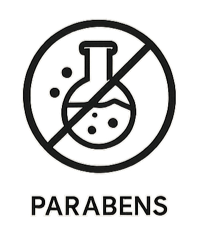
Parabens
Parabens
INS/Codex: Methylparaben (E218 / INS 218), Ethylparaben (E214 / INS 214), Propylparaben (E216 / INS 216), Butylparaben (E209).
Source: Synthetic preservatives (esters of p-hydroxybenzoic acid).
Use: Widely used as preservatives in foods, cosmetics, pharmaceuticals, and personal care products (lotions, shampoos, baby wipes)
Main risks include endocrine disruption (possible hormonal imbalance during critical growth stages), developmental concerns (reduced testosterone, sperm count), allergic & skin irritation, and bioaccumulation.
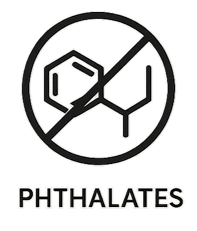
Phthalates
Phthalates
- Source: Synthetic plasticizers (esters of phthalic acid) used to make plastics flexible.
- Enter food/infant products mainly through packaging, plastics, and cosmetics.
- Linked to risk of hormonal disruptions (estrogen & testosterone), developmental and reproductive toxicity, respiratory/allergic risks and cancer risk.
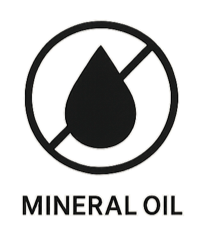
Oils
Mineral Oil
- INS/Codex: 905d
- Source: A petroleum-derived mixture of liquid hydrocarbons, obtained from crude petroleum, refined to meet pharmaceutical/food/cosmetic grades.
- Use: Baby oils, lotions, diaper creams, food glazing agents
- Forms a heavy layer on the skin that blocks pores and may interfere with natural skin respiration, reduces vitamin absorption, and exposure to hydrocarbon contaminants (may contain aromatic hydrocarbons (MOAH) → concerns about carcinogenicity)
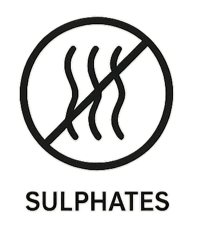
Sulfates
Sulfates
- INS/Codex: Not available
- Source: Synthetic, derived from petroleum or plant-based fatty alcohols (e.g., coconut, palm oil) treated with sulfur trioxide including Sodium Lauryl Sulphate (SLS)
- Uses: Baby shampoos, washes, toothpastes
- Can disrupt skin barrier, strip away the natural oils, cause temporary irritation, redness, dryness, or itching. May contain trace 1,4-dioxane, a byproduct with potential carcinogenic risk

Fragrances
Synthetic fragrances
- Contain harmful chemicals like benzene derivatives, aldehydes, phthalates, and toluene, which negatively affect a baby’s growth and development.
- Use: In diapers, shampoos, baby washes, soaps, powders
- Risk: allergic reactions, skin irritation, respiratory problems, eczema and are even detrimental to the eyes.

Sugars
Refined sweeteners
Examples: Maltodextrin, Corn Syrup, Liquid Glucose, High Fructose Corn Syrup (HFCS), Wheat Syrup, Invert Syrup, & many more.
Why:
When given to new born babies, this may also harm their intestinal lining and increase their changes of chronic diseases. It is also linked to blood sugar spikes, insulin resistance, weight gain, and increased risk of type 2 diabetes, fatty liver, and heart diseases.
Found in:
- Infant formula, baby cereals

Sugars
Artificial sweeteners
Examples: Aspartame (E951), Sucralose (E955), Acesulfame K (E950), Saccharin (E954), Neotame (E961), Cyclamate (E952), Advantame (E969), Maltodextrin, Hydrogenated Starch Hydrolysates (HSH), Phenylalanine (from aspartame), & many more.
Why:
Lab-made use may lead to serious illnesses in the long term. Linked to gut microbiome disruption, metabolic disorders, headaches, and concerns around neurotoxicity and endocrine imbalance.
Found in:
- ‘Diet’ soft drinks, sugar-free chewing gum, protein powders, diabetic sweets, low-cal biscuits, flavoured water, sports drinks, tabletop sweeteners, zero-sugar desserts, packaged desserts, protein bars, and candies.

Oils
Harmful oils
Examples: Palm Oil, Olestra, Fractioned Fats (Palm), Hydrogenated Oils (Trans Fats), Brominated Vegetable Oil (BVO), Benzoyl Peroxide (BPO), & many more.
Why:
These ingredients are linked to reduced calcium absorption/bone mineralization, heart issues, inflammation, gut problems, and even nervous system risks.
Found in:
- Infant formula, baby cereals, children's nutrition drinks
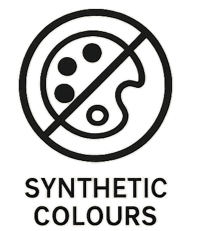
Colours
Artificial colours
Examples: Red dye 3 (E127), Azorubine (E122), Yellow 5 (E102), Sunset Yellow (E110), Red 40 (E129), Ponceau 4R (E124), Erythrosine Red 3 (E127), Titanium, Brilliant Blue (E133), Quinoline Yellow (E104), Tartrazine (INS 102), Sunset Yellow (INS 110), Brilliant Blue (INS 133), Carmoisine (INS 122)
Why:
Petroleum-based ingredient. Linked to hyperactivity in children (ADHD), allergic reactions, asthma, and potential long-term health concerns like cancer, DNA damage, and organ toxicity when consumed in excess.
Found in:
- Brightly coloured candies, kid’s snacks, packaged juices, soft drinks, flavoured yogurts, jams, pickles, instant noodles, chips, bakery mixes, and syrups.
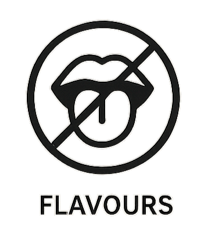
Flavours
Artificial flavours
Examples: Monosodium Glutamate (MSG, E621), Disodium 5’-ribonucleotide (E635), Disodium Inosinate (E631), Ethyl Maltol, Disodium Guanylate (E627), Sodium Glycyrrhizinate, Monopotassium Glutamate (E622), L-Cysteine, Calcium Glutamate (E623), Nature-identical Flavours, & many more.
Why:
Boost taste artificially and are often combined with hidden MSG. They can disrupt metabolism, are linked to diabetes, thyroid issues, and hormonal imbalances.
Found in:
- Instant noodles, chips, soup powders, spice mixes, processed meats, soy sauces, cheesy snacks, flavoured namkeen, ready meals, and packaged gravies.
